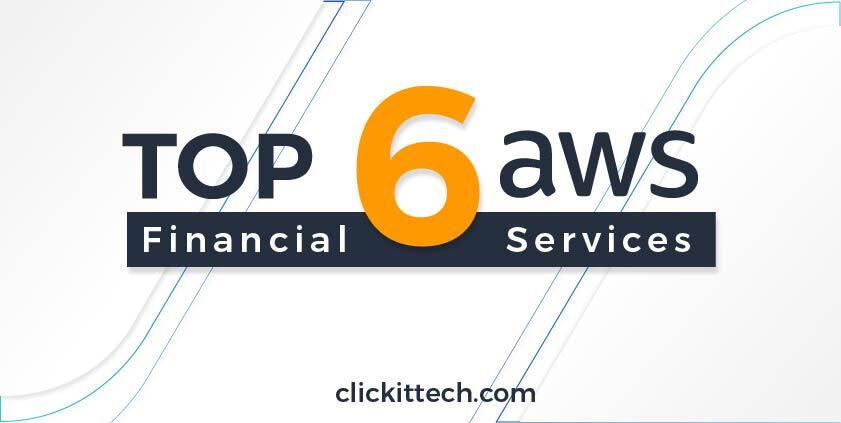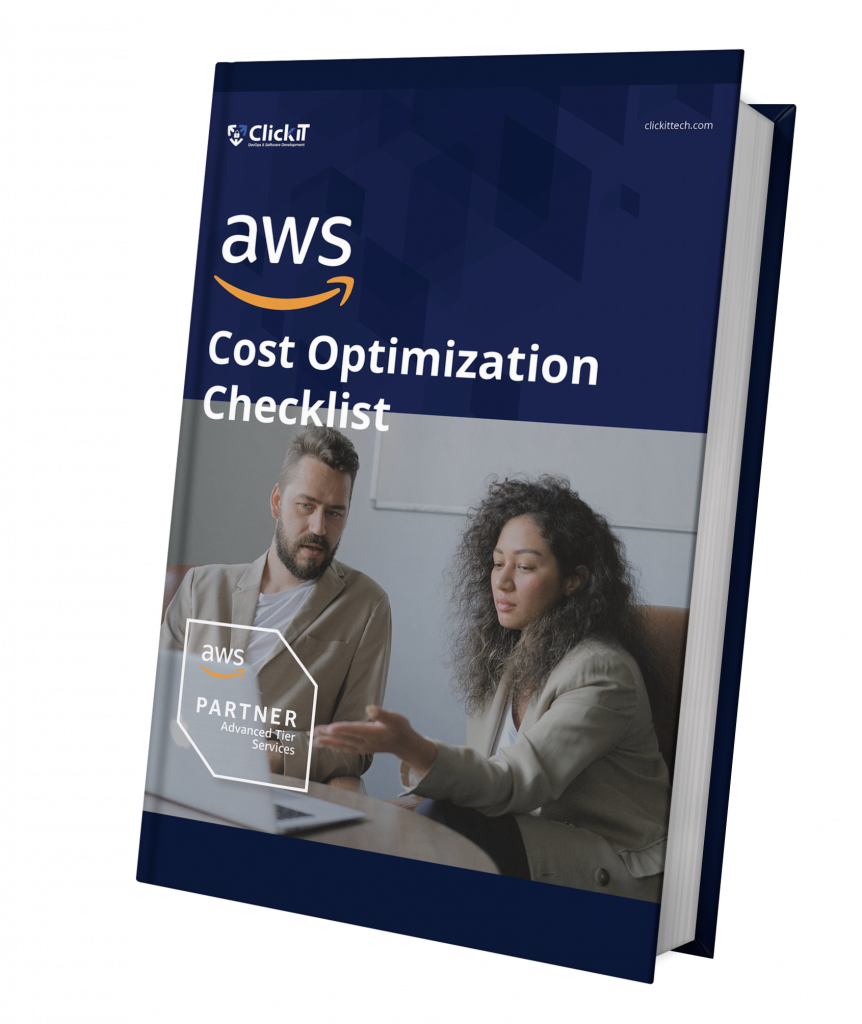AWS Financial Services is the solution to scale technology and infrastructure over a Fintech app quickly. These days, keeping your fintech company processes scalable, reliable, automated, and secured is an aspect that you can’t forgive since the global market competency is very high. This is the reason why you must ensure the best quality service to your clients. But don’t worry, it will be an effortless task now that you have this AWS Financial Services list!
So, AWS for Financial Services! In this reading, we’ll explain the best AWS services that you can use for your fintech company to optimize processes and create a compliant and secure environment on AWS.
Additionally, we will provide you with some use cases and recommendations that you can put into practice when working with any of these services to enjoy the benefits of AWS fully.
Fintech vs Banks: Read the full comparison in our blog.
- AWS Financial Services
- AWS ECS
- AWS Lambda
- AWS CodePipeline
- AWS SageMaker
- AWS Elastic MapReduce
- IAM + KMS
- In conclusion
AWS Financial Services
ECS

It is a container orchestration tool that enables your application to scale up as demand increases.
AWS ECS continuously creates containers to run the application processes as the demand increases. This way, you ensure that your fintech application is always capable of satisfying the demand levels from users and that you have no downtime.
One of the main benefits of using ECS –as an AWS Financial Service–, is that you don’t need to have a full-time system administrator in charge of the infrastructure. Why? Amazon ECS automatically scales and fails over the applications in case of any demand pick or emergency that can come into the regular operation of the app.
Watch Amazon ECS for a quick explanation.
Another particular benefit is that you have high reliability, scalability, and availability. With these features, you will ensure that you can always provide your services to users without interruption. And this, of course, will lead to having satisfied users, and you will do more business.
Hint:
If you have an app that can experiment with high demand levels, we recommend implementing AWS ECS in your production environment. This will ensure that your application can attend high demand levels and that you will always be available for all users.
AWS Financial Services: Lambda

Before getting into this AWS fintech service, let’s review what Serverless is.
It is a technology to run applications without servers, so you don’t have to worry about the backend infrastructure, security, firewalls, networking, etc. All you need to do is focus on the development part.
There is an abstraction of all IT layers; this means no servers, no load balancers, no networking, no microservices, no instances. Just you and your code, can you imagine it?
Now, Lambda is an AWS Fintech Service that helps you to build serverless applications.
You bring your code, execute it, and you will get charged for that millisecond, second or minute instead of paying for one month or an hour. Obviously, you will reduce costs thanks to this attribute.
Amazon Lambda is autoscaling, fault-tolerant, and it acts as a FaaS. Also, Lambda allows you to abstract security operations. This means that whatever you do above Lambda, you have to take care of that, for example, function, algorithm, web security, best practices, and cross-site script attacks, among other things.
But from the other side, everything that is below lambda, like firewalls, routers, networking, and servers are taking care of Amazon Web Services.
AWS for Fintech! Amazing, right? Because instead of worrying about many aspects, you just have to consider one that is the code.
Looking for a secure Financial Model? Open Banking AWS is a new way to share financial information electronically and securely.

Use cases
1. You can create backend applications or static websites applications alongside with Amazon S3.
2. Besides, if you have an application that runs an API and has to route the request to multiple websites or apps, I recommend using Amazon Lambda with an API gateway.
AWS Financial Services: CodePipeline

It is a continuous delivery service that enables you to integrate Continuous Integration and Continuous Delivery pipelines and automate the process of building, testing, and launching new code changes into your fintech applications.
This AWS Financial Service is excellent for implementing with a container orchestration approach to update all the Docker images that will be launched into the infrastructure.
One of the main business benefits that you can enjoy is that AWS CodePipeline makes the code release process faster.
For example, if a fintech company wants to release a new payment method or feature into fintech application, AWS CodePipeline will make the code release process faster by automating it. This way, the code release will take seconds instead of an hour if you automate the process.
Recommendations
– When implementing CodePipeline into your fintech application, you should also implement DevSecOps to verify that all your code releases are free from vulnerabilities and dependency servers.
– Additionally, we strongly recommend you to perform automated unit testing on your code pipeline for new code deployments into your infrastructure.
Also read: What is DevSecOps and How to enable it on your SDLC?
AWS Financial Services: SageMaker

It is an end-to-end machine-learning solution to build and deploy machine-learning models to an API. As you may know, every service needs to have an API where you can integrate or be cloud-native.
This AWS Financial Service facilitates development productivity and allows you to deploy your machine learning algorithm to produce faster and easier.
Amazon SageMaker is very easy for developers to integrate because it comes with a preconfigured setup, 15 or more algorithms, and the famous TensorFlow framework.
An important factor that should be mentioned is that you need to use Python for all your integrations.
Use cases
1. Predicting analytics: If you are running big data without analysis and due diligence, it is not big data.
2. Anomaly detection: You can proactively monitor your infrastructure and identify any anomaly.
3. Fraud detection: Since there are a lot of attacks and steal information, with Amazon SageMaker, you can identify any malicious activity.
AWS Financial Services: Elastic MapReduce

It is a big data platform based on Apache Spark that analyzes and processes big and large datasets.
As with any conventional data center, you need to buy the entire farm of servers, and you spend a lot of Capex in that case. Still, with Amazon Elastic MapReduce, you can reduce your infrastructure costs and Capex, because you pay for what you are using.
Apart from this, AWS Elastic MapReduce has the ability to adopt spot instances, which allows you to save 50% to 80% of the instance.
Use cases
1. AWS Elastic MapReduce is used for machine learning, risk calculations, deep learning, and analytics.
AWS Financial Services: IAM + KMS

Both IAM and KMS are AWS Financial Services, but let’s review each of them individually and then explain why it benefits to using them together.
IAM stands for Identity and Access Management Service. It is a service that permits a fintech company to configure users for its AWS infrastructure and grant specific permissions for users.
For example, if you are going to create a user for a web developer, perhaps you only want him to have access to the application servers where he will be working or grant him access to the database.
IAM works to create users and assign particular permissions so that every user only has the required authorization level.
KMS means Key Management Service, and it is a financial service that enables you to create and administrate passwords, accesses, and user names to keep them confidential and away from undesired entrances.
Now, IAM + KMS helps you improve your fintech company security significantly. Why? If you grant permissions over specific resources on your AWS infrastructure, providing your team with security passwords and users, everyone will only have the necessary access to perform their job.
Consequently, this will help you avoid undesired access or damage to your sensitive resources and data.
Read our slideshow about Top 10 AWS Security best practices for financial services
Recommendations
– You must create groups of users in your IAM approach, and then integrate all your team on those groups with the specific permissions for each of them.
– Rotate and change passwords and access to your sensitive resources every 30 days. If you maintain the same ones for a long time, you are making your information more vulnerable.
– Enable multifactor authentication for all your users because this will give you an extra layer of security for every user.
Here is an extra recommendation… Kubernetes vs Docker, find out which is the most influential open-source project for your Financial Company.
In conclusion
As you may have noticed, AWS offers you various Financial Services for every aspect of your fintech company.
Now that you know all the benefits you can enjoy while working with any of the AWS Financial Services, it is time to get started and implement them wisely on your company! Trust on a tech partner with Fintech Experience!

AWS Financial Services FAQs
AWS prioritizes security and compliance in financial services by offering a comprehensive set of services and features. This includes encryption options, identity and access management tools, dedicated hardware security modules, and adherence to industry-specific regulations such as PCI DSS and GDPR
AWS offers scalable solutions that allow financial services applications to adapt to varying workloads. With services like Amazon EC2, AWS Lambda, and Amazon RDS, financial institutions can dynamically scale resources, ensuring optimal performance during peak times while minimizing costs during periods of lower demand.
Yes, AWS offers services like Amazon S3 for secure and compliant data storage and AWS Glacier for long-term archival. Additionally, AWS provides multiple availability zones and regions, allowing financial institutions to implement resilient architectures and meet stringent regulatory requirements for disaster recovery and data retention.









